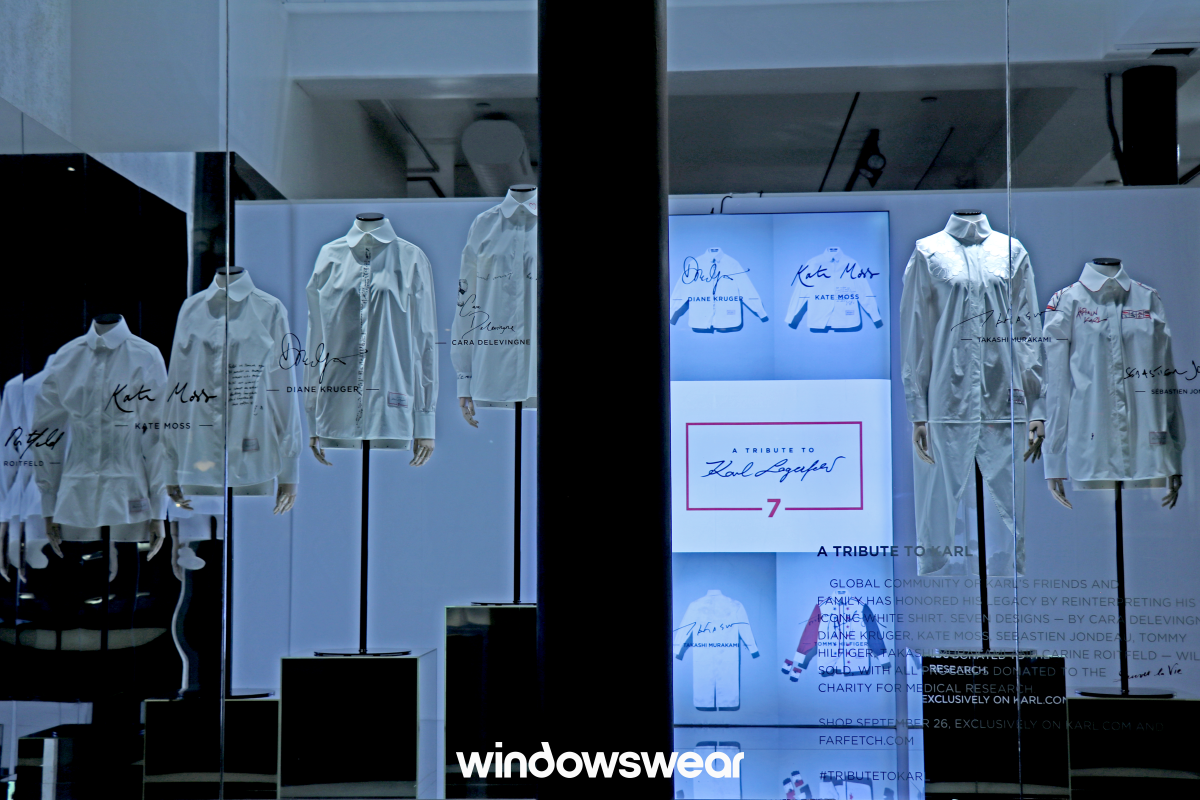NEW DELHI — In a collaboration between a global and a local brand, the Karl Lagerfeld label and Cover Story, a young brand belonging to Indian retailer Future Group, have launched two concept stores here.
Karl Lagerfeld for Cover Story opened in two malls with the highest footfalls in the city — DLF Promenade and Select City Walk in South Delhi. The 90-sku capsule collection is also available within the Cover Story brand stores at 17 locations, including cities such as Mumbai and Ahmedabad.
“We are in India, with an Indian brand. That is something that is quite important,” Caroline Lebar, head of image and communications at Karl Lagerfeld, told WWD. “The goal is to develop something that is a true offer, not something that is only a marketing story. It is an inclusive story, exclusively for India.”
Cover Story, one of the brands of Future Group subsidiary Future Style Lab, has estimated sales of 1 billion rupees, or $14 million at current exchange, according to analysts. Future Style Lab is a three-year-old subsidiary of the Future Group, with a London-based design office. Future Group, with estimated revenues of $5.4 billion in the year ending March 31, owns two listed retail entities, Future Retail and Future Lifestyle Fashion.
Cover Story is a fast-fashion brand that draws inspiration from London runway fashion, while maintaining its roots in India.
Future Style Lab chief executive officer Manjula Tiwari, who has worked with global brands such as Espirit, United Colors of Benetton, and e-commerce company Jabong, said of the Lagerfeld deal: “This collaboration brings in great styles at affordable prices.” Keeping in mind the positioning of Cover Story, the shape and fit are designed to match the Indian physique, she said.
The collection was agreed upon, created and in the stores in just over a year. Maggie Priori, licensing director of the Lagerfeld brand, visited India on a holiday last year, and came across the Cover Story stores. “Even on holiday you look at the malls when you’re in this business,” she said. “I know that Karl was the first to launch with a fast-fashion brand — with H&M in 2004 — and I said to myself, ‘It would be amazing to have a similar deal in a market where this hasn’t happened yet.’ It happened very quickly.”
Speaking about the collaboration, which was the last that Karl Lagerfeld himself worked on before his death last February, Priori noted, “In India, I think the collection needs more customization. The fast fashion doesn’t really fit. Having an understanding of the market is more important here.”
“We mixed Karl’s DNA, and the expertise of Manjula. We wouldn’t have done it with someone else,” Lebar added.
Lagerfeld’s label has been growing globally in the last few years and now has more than 200 brick-and-mortar stores in 30 countries and is available in more than 96 countries through e-commerce. It has done more than 50 collaborations, with the most recent being with Puma.
Lebar noted that few of the collaborations have been launched with such a large collection. “This becomes the DNA of the brand when you make so many collaborations,” she observed. “It becomes your own DNA to become more open-minded, to do new things in new countries, with new people, the team is the most flexible team you can imagine.”
Tiwari said the manufacturing, in Turkey, China and India, focused on keeping the same suppliers, and the quality of the brand. “The level of detail is not just a marketing strategy. We made sure the quality of the zippers, the belts, the buttons, were all at par, so we could give customers this level of luxury at affordable pricing,” she said.

